 W
WAlan IV was Duke of Brittany from 1084 until his abdication in 1112. He was also Count of Nantes and Count of Rennes. His parents were Duchess Hawise and Duke Hoel II. He is also known as Alan Fergant. Through his father, he was of the Breton House of Cornouaille dynasty. He was the last Breton-speaking Duke of Brittany.
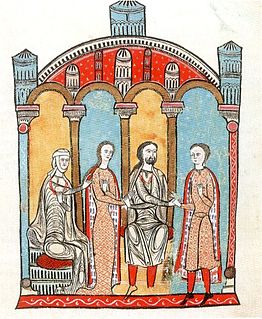 W
WBernard Ato IV was the Viscount of Nîmes of the Trencavel family from 1074 to his death. Bernard Ato was the son of Raymond Bernard of Nîmes and Ermengarde of Carcassonne.
 W
WWalter Sans Avoir was the lord of Boissy-sans-Avoir in the Île-de-France. He was mistakenly known as Walter the Penniless. While his name literally means "Walter without having", it actually derives from the name of his demesne and, ultimately, the motto of his family, Sans avoir Peur ("Fearless").
 W
WBaldwin I also known as Baldwin of Boulogne, was the first count of Edessa from 1098 to 1100, and king of Jerusalem from 1100 to his death. Being the youngest son of Eustace II, Count of Boulogne, and Ida of Lorraine, he was destined for a church career, but he abandoned it and married a Norman noblewoman, Godehilde of Tosny. He received the County of Verdun in 1096, but he soon joined the crusader army of his brother Godfrey of Bouillon and became one of the most successful commanders of the First Crusade.
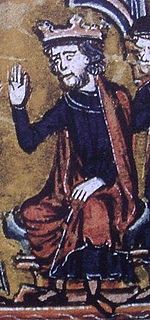 W
WBaldwin II, also known as Baldwin of Bourcq or Bourg, was Count of Edessa from 1100 to 1118, and King of Jerusalem from 1118 until his death. He accompanied his cousins Godfrey of Bouillon and Baldwin of Boulogne to the Holy Land during the First Crusade. He succeeded Baldwin of Boulogne as the second count of Edessa when he left the county for Jerusalem following his brother's death. He was captured at the Battle of Harran in 1104. He was held first by Sökmen of Mardin, then by Jikirmish of Mosul, and finally by Jawali Saqawa. During his captivity, Tancred, the Crusader ruler of the Principality of Antioch, and Tancred's cousin, Richard of Salerno, governed Edessa as Baldwin's regents.
 W
WPeter Bartholomew was a French soldier and mystic who was part of the First Crusade as part of the army of Raymond of Saint-Gilles. Peter was initially a servant to William, Lord of Cunhlat.
 W
WBernard II was the Count of Besalú and Ripoll in Catalonia, the brother, co-ruler, and successor of William II, who was assassinated in 1066. The second son of William I of Besalú and his wife, Adelaide, Bernard married his first cousin Ermengarda, daughter of Ponç I of Empúries and Adelaide, sister of William I.
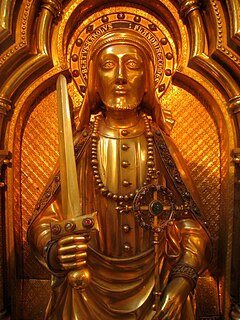 W
WCharles the Good was Count of Flanders from 1119 to 1127. His murder and its aftermath were chronicled by Galbert of Bruges.
 W
WDagobert was the first Archbishop of Pisa and the second Latin Patriarch of Jerusalem after the city was captured in the First Crusade.
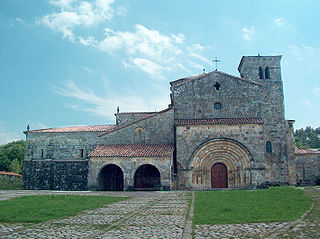 W
WFernando Díaz was a Spanish nobleman and military leader in the Kingdom of León, the most powerful Asturian magnate of the period. He held the highest rank in the kingdom, that of count, from at least 24 September 1089. He was the last Count of Asturias de Oviedo and was succeeded by a castellan, a novus homo, perhaps in an ecclesiastical–royal effort to curtail the power of the Asturian aristocracy.
 W
WEdgar Ætheling or Edgar II was the last male member of the royal house of Cerdic of Wessex. He was elected King of England by the Witenagemot in 1066, but never crowned.
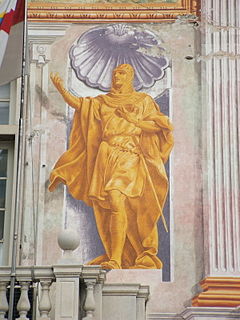 W
WGuglielmo Embriaco, was a Genoese merchant and military leader who came to the assistance of the Crusader States in the aftermath of the First Crusade. Embriaco is considered one of the founders of what would become the Republic of Genoa.
 W
WEustace III was the count of Boulogne from 1087 succeeding his father, Eustace II. He joined the First Crusade, being present at Nicaea, Dorylaeum, Antioch, and Jerusalem. After fighting in the battle of Ascalon, he returned home. Initially offered the Kingdom of Jerusalem, Eustace was at Apulia when he received news of Baldwin of Bourcq's election to the throne. On his return to Boulogne, he founded a Cluniac monastery in Rumilly, retired as a monk, and died in 1125.
 W
WEhremar or Ebramar or Evremar was Latin Patriarch of Jerusalem from 1102 to 1105 or 1107, and then Archbishop of Caesarea.
 W
WGaston IV was viscount of Béarn from 1090 to 1131. He was called le Croisé––the Crusader––because of his participation in the First Crusade as part of the army of Raymond of Saint-Gilles.
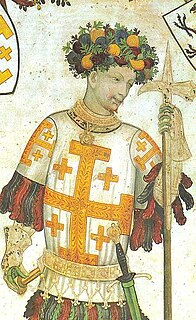 W
WGodfrey of Bouillon was a Frankish nobleman and one of the pre-eminent leaders of the First Crusade. He was the first ruler of the Kingdom of Jerusalem from 1099 to 1100. He avoided using the title of king, choosing instead that of princeps. Older scholarship is more fond of another title, that of Advocatus Sancti Sepulchri, a secondary title which is still preferred by the Catholic Equestrian Order of the Holy Sepulchre of Jerusalem.
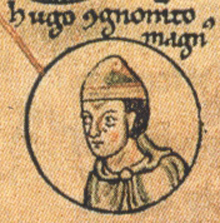 W
WHugh, Count of Vermandois, called the Great was the first count of Vermandois from the House of Capet. He is known primarily for taking part in the First Crusade. His nickname Magnus is probably a bad translation into medieval Latin of an Old French nickname, le Maisné, meaning "the younger", referring to Hugh as younger brother of King Philip I of France.
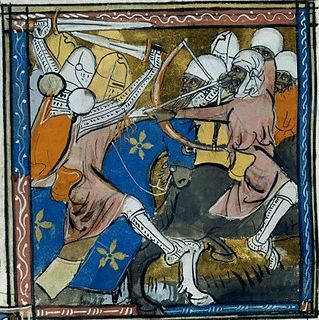 W
WHugh of Fauquembergues, also known as Hugh of St Omer, Hugh of Falkenberg, or Hugh of Falchenberg was Prince of Galilee from 1101 to his death. He was Lord of Fauquembergues before joining the First Crusade. Baldwin I of Jerusalem granted him Galilee after its first prince, Tancred, who was Baldwin's opponent, had voluntarily renounced it. Hugh assisted Baldwin against the Fatimids and made raids into Seljuk territories. He established the castles of Toron and Chastel Neuf. He died fighting against Toghtekin, Atabeg of Damascus.
 W
WLǫgmaðr Guðrøðarson was a late eleventh-century King of the Isles, whose rise, reign, and fall from power are obscure. He was the eldest son of Guðrøðr Crovan, King of Dublin and the Isles, a Norse-Gaelic dynast who conquered and ruled the kingdoms of the Isles and Dublin, before dying in 1095. Three years after the latter's death, the Isles was conquered by Magnús Óláfsson, King of Norway, whose regime in the region lasted until his death in 1103. The chronology of Lǫgmaðr's reign is uncertain: he may have begun his reign either before Magnús' conquest, during his regime, or after his demise.
 W
WIn the 10th through 13th centuries, the Lords of Esch were the holders of the castle of Esch-sur-Sûre in the Ardennes region of Lower Lorraine, then a part of the Holy Roman Empire.
 W
WOdo of Bayeux, Earl of Kent and Bishop of Bayeux, was the maternal half-brother of William the Conqueror, and was, for a time, second in power after the King of England.
 W
WOshin of Lampron was an Armenian nakharar. Historical sources mentioned that he was a lord of a fortress near the city of Ganja, who migrated in the early 1070s to Cilicia and founded the House of Lampron that ruled the Armenian Kingdom of Cilicia in the 12th and 13th centuries.
 W
WWilliam I (Willame) de Percy (d.1096/9), 1st feudal baron of Topcliffe in North Yorkshire, known as Willame als gernons, was a Norman nobleman who arrived in England immediately after the Norman Conquest of 1066. He was the founder of the powerful English House of Percy, Earls of Northumberland, and Dukes of Northumberland, a great historical House of England "that, like Caesar's, has been artificially preserved (twice) to the present time". The male line ended in 1174/5 on the death without male progeny of his grandson William II de Percy, but the surname "Percy" was re-adopted by the latter's younger grandson Richard de Louvain (d.1244), whose own "Percy" descendants again failed in the male line in 1670 on the death of Joceline Percy, 11th Earl of Northumberland, and was again re-adopted by the latter's great-grand-daughter's husband Sir Hugh Smithson, 4th Baronet (c.1714-1786), created Duke of Northumberland, whose descendants survive today.
 W
WAdhemar de Monteil was one of the principal figures of the First Crusade and was bishop of Puy-en-Velay from before 1087. He was the chosen representative of Pope Urban II for the expedition to the Holy Land. Remembered for his martial prowess, he led knights and men into battle and fought beside them, particularly at the Battle of Dorylaeum and Siege of Antioch. Adhemar is said to have carried the Holy Lance in the Crusaders’ desperate breakout at Antioch on 28 June 1098, in which superior Islamic forces under the atabeg Kerbogha were routed, securing the city for the Crusaders. He died in 1098 due to illness.
 W
WReginald II was the count of Burgundy, Mâcon, Vienne and Oltingen. He was born in 1061 as the eldest son of William I of Burgundy and brother to Stephen I of Burgundy, his successor, as well as to Pope Callixtus II.
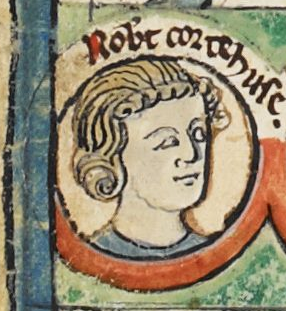 W
WRobert Curthose or Robert II of Normandy was the eldest son of William the Conqueror and succeeded his father as Duke of Normandy in 1087, reigning until 1106. Robert was also an unsuccessful claimant to the throne of the Kingdom of England. The epithet "Curthose" had its origins in the Norman French word courtheuse 'short stockings' and was apparently derived from a nickname given to Robert by his father; the chroniclers William of Malmesbury and Orderic Vitalis reported that William the Conqueror had derisively called Robert brevis-ocrea.
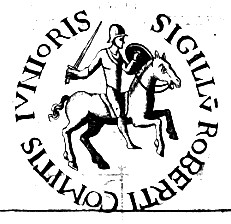 W
WRobert II, Count of Flanders was Count of Flanders from 1093 to 1111. He became known as Robert of Jerusalem or Robert the Crusader after his exploits in the First Crusade.
 W
WHistoria Hierosolymitana is a chronicle of the First Crusade by written between c. 1107–1120 by Robert the Monk , a French prior.
 W
WRotrou III, called the Great, was the Count of Perche and Mortagne from 1099. He was the son of Geoffrey II, Count of Perche, and Beatrix de Ramerupt, daughter of Hilduin IV, Count of Montdidier. He was a notable Crusader and a participant in the Reconquista in eastern Spain, even ruling the city of Tudela in Navarre from 1123 to 1131. He is commonly credited with introducing Arabian horses to the Perche, giving rise to the Percheron breed. By his creation of a monastery at La Trappe in memory of his wife, Matilda, daughter of Henry I of England, in 1122 he also laid the foundations of the later Trappists.
 W
WStephen Henry, Count of Blois and Count of Chartres, was the son of Theobald III, count of Blois, and Gersent of Le Mans.
 W
WStephen I, known as the Rash, was the count of Burgundy, Mâcon and Vienne from 1097 until his death.
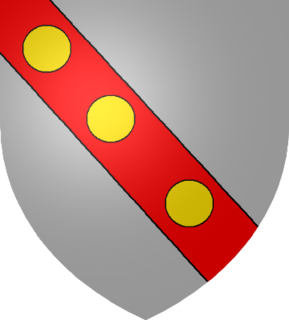 W
WStephen of Aumale was Count of Aumale from before 1089 to 1127, and Lord of Holderness.
 W
WSweyn the Crusader was a Danish crusader.
 W
WTancred was an Italo-Norman leader of the First Crusade who later became Prince of Galilee and regent of the Principality of Antioch. Tancred came from the house of Hauteville and was the great-grandson of Norman lord Tancred of Hauteville.
 W
WThoros was an Armenian ruler of Edessa at the time of the First Crusade. Thoros was a former officer (curopalates) in the Byzantine Empire and a lieutenant of Philaretos Brachamios. He was Armenian but practiced the Greek Orthodox faith.
 W
WRaymond IV, Count of Toulouse, sometimes called Raymond of Saint-Gilles or Raymond I of Tripoli, was a powerful noble in southern France and one of the leaders of the First Crusade (1096–1099). He was the Count of Toulouse, Duke of Narbonne and Margrave of Provence from 1094, and he spent the last five years of his life establishing the County of Tripoli in the Near East.
 W
WPope Urban II, otherwise known as Odo of Châtillon or Otho de Lagery, was the head of the Catholic Church and ruler of the Papal States from 12 March 1088 to his death. He is best known for initiating the Crusades.